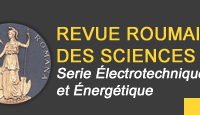Paper title: AN EFFICIENT ASYNCHRONOUS BRAIN-COMPUTER INTERFACE FOR ASSISTIVE TECHNOLOGY: A NOVEL APPROACH
Author(s): NEBIA BENTABET, NASREDDINE BERRACHED,
Abstract: Constructing a general and a daily used controller remains the main concern for brain-computer interfaces (BCIs) systems. The
most characterized problems in synchronous based BCI systems are the dependence on the stimulation and the number of
stimulation sequences set in advance, the ignorance of the current userís state, and the requirement of operator intervention
since the user can neither start nor stop the BCI system. Thus, to solve these issues, it is important to know at any given time if
the user is paying attention to the system. To this end, an asynchronous P300 based BCI approach is introduced in this paper,
where a subject can control home appliances by switching ON or OFF a device to attain a self-paced control. We introduce a
new classification approach which uses separate rows and columns classifiers in BCI2000 framework. Each dataset is analyzed
separately in order to find differences in their characteristics and utilize these differences in improving the performance of the
P300Speller paradigm. Then we combined the output of each classifier to recognize the desired action. A threshold-based
approach was applied to help our system to take a decision or to abstain from doing so. The asynchronous classifier reached
promising results. This approach would enhance the system performance by increasing the selection speed and the number of
sequences needed to take a decision. It produced remarkably better results than classifying row and column together.
Keywords: Brain computer interface, Synchronous systems, Asynchronous systems, Electroencephalography (EEG), Smart
home, Assistive technology Year: 2020 | Tome: 65 | Issue: 1-2 | Pp.: 131-137
Full text : PDF (990 KB) |



